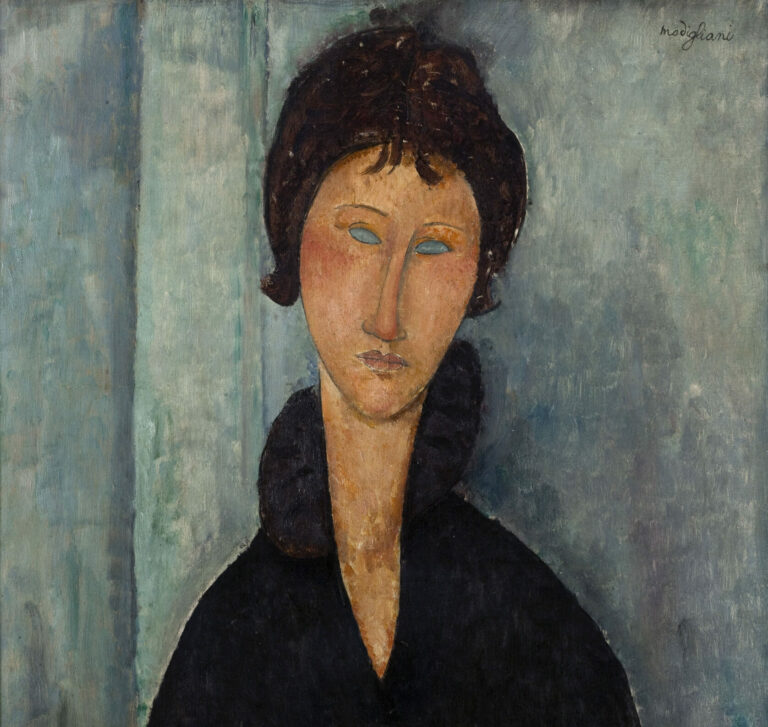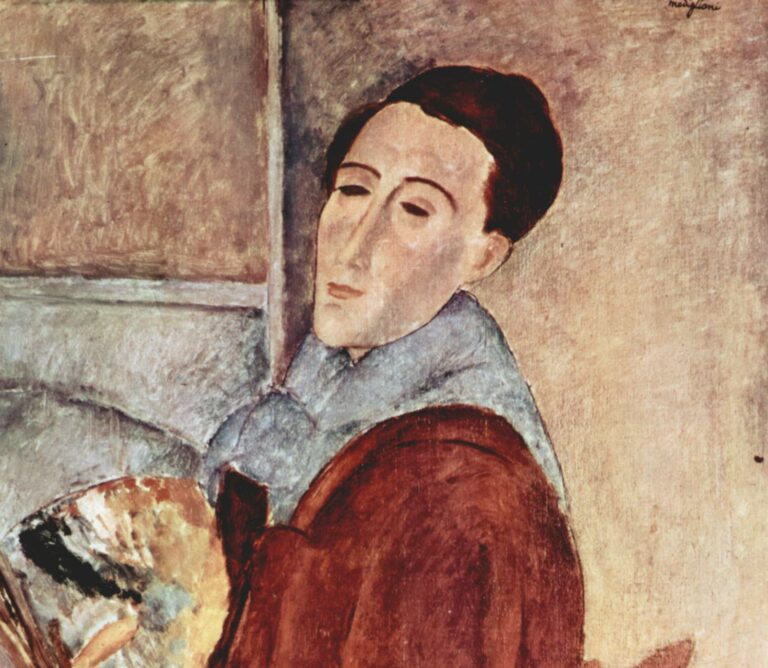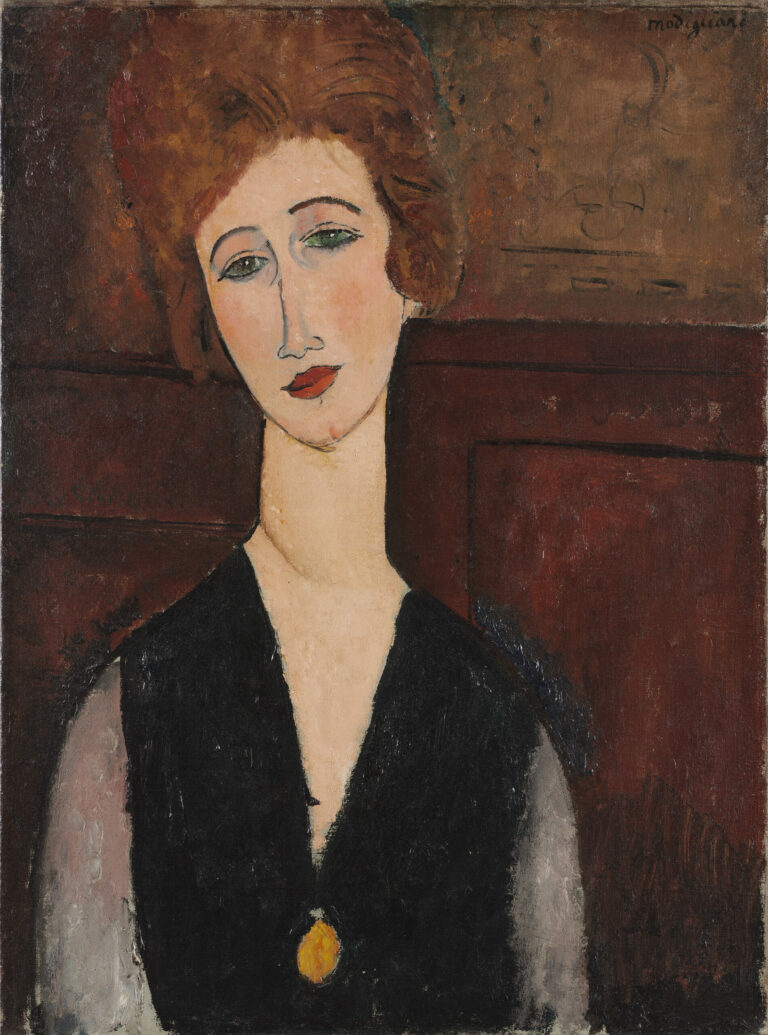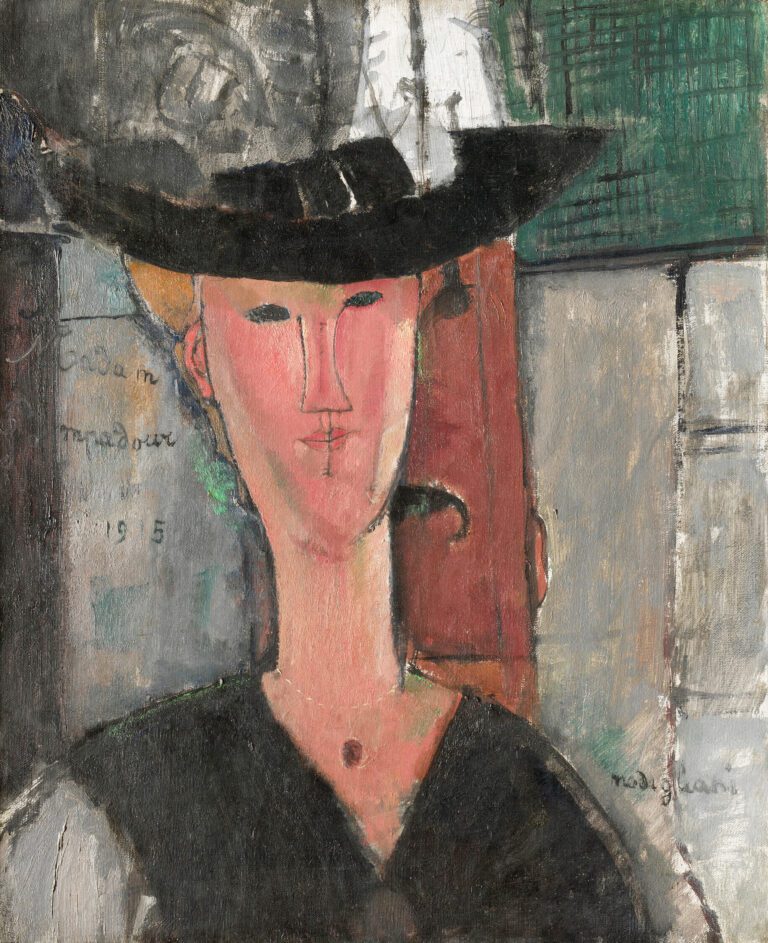
This work perfectly illustrates Modigliani’s style, a personal synthesis between Parisian modernity и Italian tradition.
The portrait reveals his companion Jeanne Hébuterne in a meditative pose, her left hand delicately touching her cheek, her head tilted to the right.
The artist employs his characteristic technique: an oval face with simplified features, an elongated neck, and a stretched silhouette that evokes the Mannerist elegance of 16th-century Italy. The asymmetrical composition is structured around the white blouse that contrasts with the ochre chair, creating a subtle chromatic balance against a blue-gray background. The soft modeling of the flesh draws inspiration from the Italian Renaissance, particularly the Venetian school. This work, painted in 1919 upon the couple’s return to Paris, bears witness to the profound intimacy between the artist and his model, captured with remarkable sensitivity.
Further information
- Jeanne Hébuterne, by Amedeo Modigliani, 1919
- 36 × 28 3/4 in. (91.4 × 73 cm)
- The Metropolitan Museum of Art, Fifth Avenue, New York, displayed in gallery 900
Born in Livorno to a cultured family, Amedeo Modigliani (1884-1920) settled in Paris in 1906 where he joined the effervescent artistic community of Montmartre. Trained in Florence and Venice, he drew from classical Italian art while appropriating the modernist innovations of his contemporaries Picasso and Brancusi. His unique style synthesizes influences from African art, Italian Mannerism, and Brancusi’s sculpture, creating a recognizable plastic language through expressive deformations and formal elegance. He produced a body of work of remarkable stylistic coherence, favoring portraits and nudes of refined sensuality. His passionate relationship with Jeanne Hébuterne, whom he met in 1917, inspired his most accomplished creations. Having died prematurely from tuberculosis, Modigliani left behind an unfinished but strikingly modern oeuvre.




